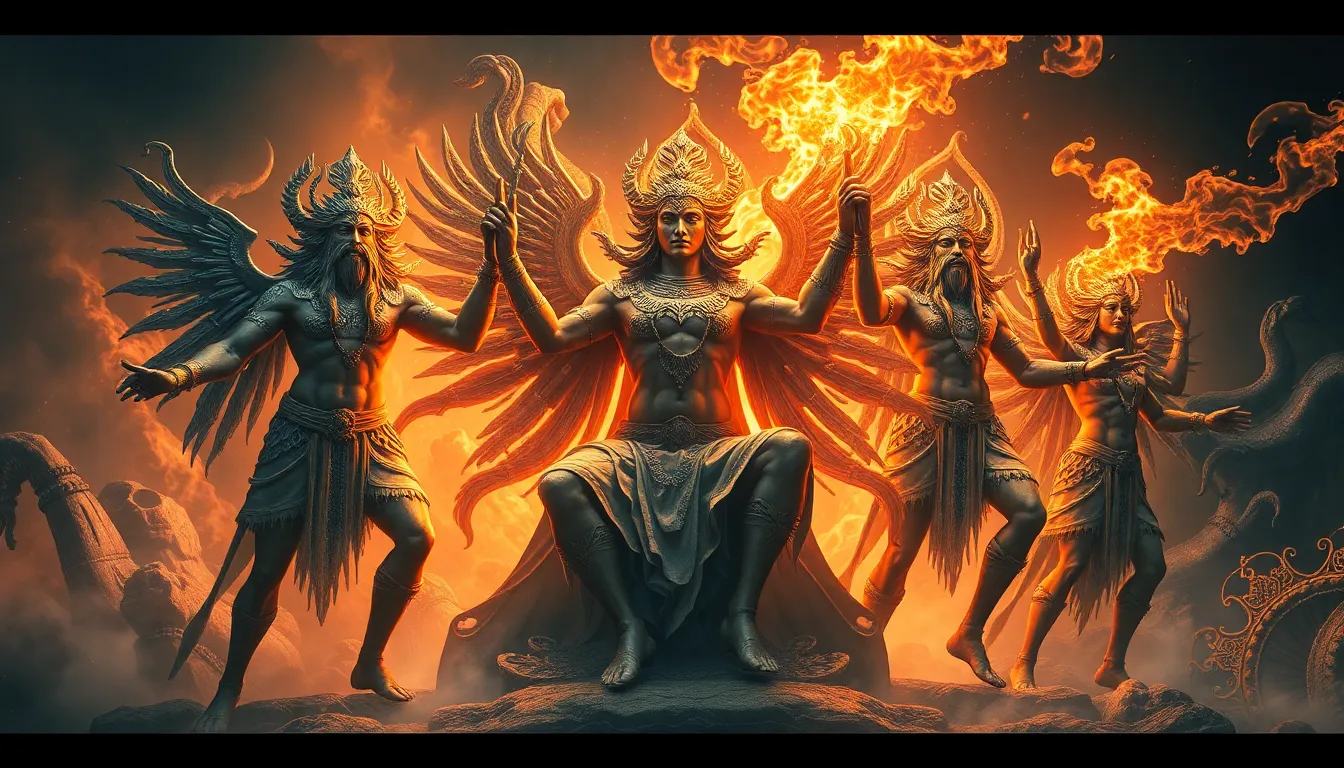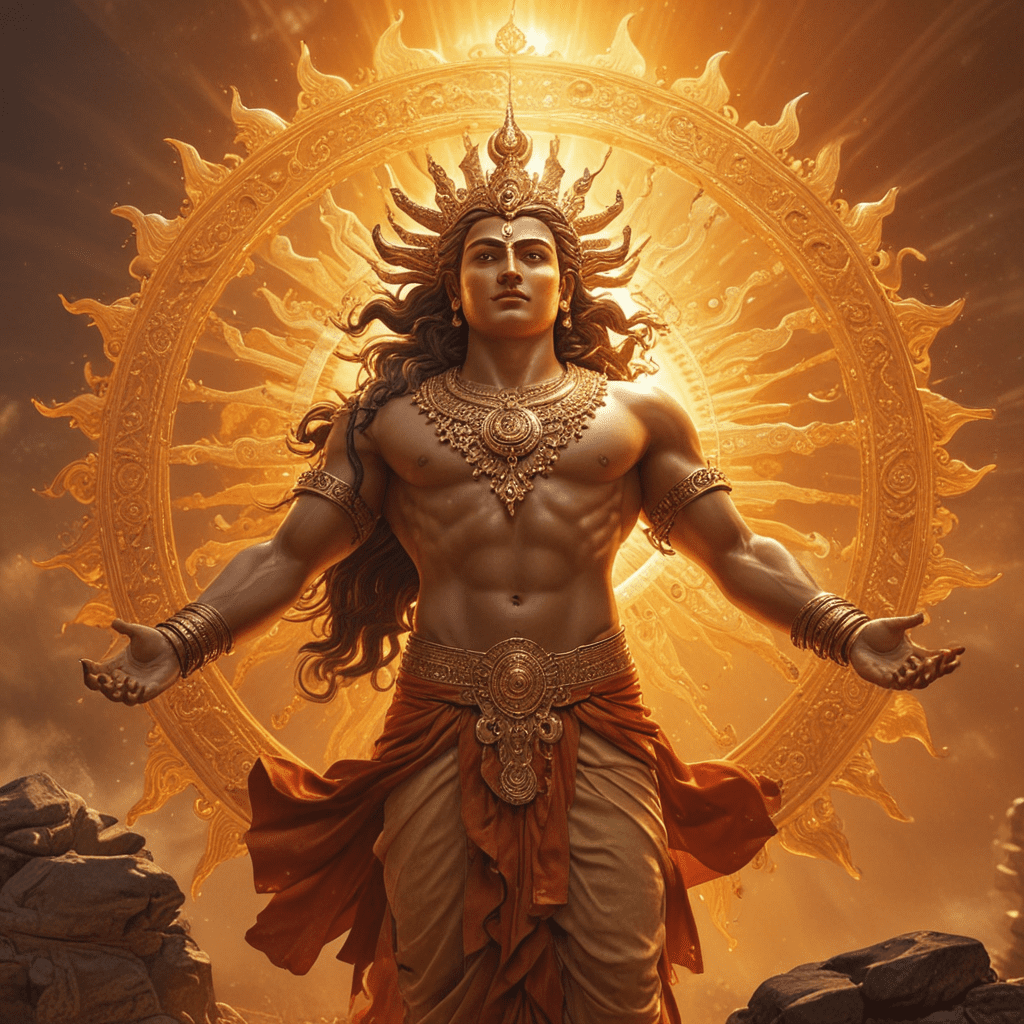1. Introduction:
The Maya civilization, renowned for its sophisticated writing system, complex calendar, and intricate art, also held a unique and complex relationship with the concept of sacrifice. Sacrifice played a central role in their religious beliefs and practices, serving as a vital means of appeasing the gods, ensuring fertility, and maintaining cosmic balance.
2. The Mayan Creation Myth and the Importance of Sacrifice:
The Mayan creation myth revolves around the hero twins, Hunahpu and Xbalanque, who descend into the underworld to confront the Lords of Xibalba. Through their sacrifice and transformative journey, they bring about the creation of the world and humanity. This myth underscores the significance of sacrifice as a catalyst for creation and renewal.
3. The Mayan Pantheon and Sacrificial Rituals:
The Mayan pantheon included numerous gods and goddesses associated with various aspects of life and the cosmos. Chaac, the rain god, was often appeased through offerings of food and incense. Yum Kax, the maize god, received sacrifices of blood and hearts to ensure bountiful harvests. Itzamna, the creator god, was associated with auto-sacrifice, often depicted with a pierced tongue or genitals.
4. The Practice of Human Sacrifice in Maya Religion:
Human sacrifice, though a controversial topic, played a significant role in Mayan rituals. Theories suggest sacrifices were chosen based on age, social status, and even physical attributes. While the practice remains shrouded in mystery, it emphasizes the Maya's belief in the power of sacrifice to appease the gods and maintain cosmic order.
5. The Symbolic Meaning of Sacrifice:
Beyond appeasement, sacrifice held profound symbolic meaning within Mayan mythology. Blood, the essence of life, was seen as a vital offering to invigorate the gods and ensure the continuation of the world. Sacrifice symbolized a profound act of exchange, a way to maintain the delicate balance between the human and the divine.
6. Sacrifice and Ritual in Mayan Art and Architecture:
The Maya expressed their deep reverence for sacrifice through their intricate art and architecture. Murals depicting sacrificial rituals adorned the walls of temples, showcasing the reverence and awe associated with this practice. Sculptures of deities holding sacrificial implements served as constant reminders of the importance of offering and exchange in maintaining cosmic order.
The very design of Mayan temples reflected their sacrificial practices. Elevated platforms provided a stage for ritual offerings, while carved reliefs depicted scenes of sacrifice and other rituals. These structures were not merely places of worship but also served as physical manifestations of the Maya's complex beliefs about sacrifice and its role in the world.
7. Sacrifice and the Maya Calendar:
The intricate Mayan calendar system played a crucial role in determining the timing of sacrificial rituals. Specific dates and events held significance in the Maya worldview, with certain days designated for offerings to particular gods. This connection between sacrifice and the calendar underscores the Maya's deep understanding of time and its impact on their religious practices.
The calendar served as a guide, dictating the rhythms of sacrifice and ensuring offerings were made at the appropriate times to maintain cosmic harmony. This intricate relationship between sacrifice and the calendar reflects the Maya's profound reverence for the interconnectedness of the natural and supernatural worlds.
8. The Decline of Mayan Civilization and the Transformation of Sacrifice:
With the decline of Mayan civilization, the practice of sacrifice gradually diminished. The reasons for this decline remain debated, but it likely reflects a shift in religious beliefs and practices. As the Maya faced political upheaval, environmental challenges, and social change, their understanding of the cosmos and their place within it likely evolved, leading to a transformation of the role of sacrifice in their lives.
While the practice of human sacrifice may have ceased, the legacy of sacrifice continues to resonate within Mayan culture and mythology. The symbolism associated with sacrifice, particularly its association with renewal, rebirth, and the offering of life to ensure the continuation of the world, remains deeply embedded in their beliefs and worldview.
9. Sacrifice in Modern Mayan Communities:
Although the practice of human sacrifice has long since disappeared, elements of sacrifice continue to hold significance within modern Mayan communities. Today, sacrifice often takes the form of symbolic offerings, such as food, flowers, and incense. These offerings serve as a way to honor ancestors, connect with the divine, and express gratitude for the blessings received from the natural world.
The contemporary practice of sacrifice reflects a transformation in its meaning and purpose. While the act itself may have changed, the underlying beliefs about the interconnectedness of the human and the divine, the importance of offerings and exchange, and the cyclical nature of life, death, and renewal continue to resonate deeply within Mayan culture.
10. Conclusion:
Sacrifice, a complex and multifaceted concept, played a pivotal role in Mayan mythology and religious practices. From the creation myth to the intricate calendar system, the Maya viewed sacrifice as a vital means of maintaining cosmic order, ensuring fertility, and connecting with the divine. The legacy of sacrifice continues to inform our understanding of Mayan beliefs and worldview, even as the practice itself has evolved and transformed over time. Through their art, architecture, and contemporary rituals, the Maya continue to offer valuable insights into the profound human need to find meaning and purpose through sacrifice and connection to the sacred.
Frequently Asked Questions (FAQs)
- Q: What was the purpose of human sacrifice in Mayan society?
A: The reasons for human sacrifice in Mayan society are complex and not fully understood. Theories suggest that sacrifices were offered to appease the gods, ensure fertility, or maintain cosmic balance.
- Q: How were human sacrifices chosen?
A: Theories suggest that human sacrifices were chosen based on age, social status, and even physical attributes. However, the specific criteria and selection process remain shrouded in mystery.
- Q: What is the symbolic meaning of blood in Mayan sacrifice?
A: Blood, the essence of life, was seen as a vital offering to invigorate the gods and ensure the continuation of the world. It symbolized a profound act of exchange, a way to maintain the delicate balance between the human and the divine.
- Q: Do Maya people still practice human sacrifice today?
A: No, the practice of human sacrifice has long since disappeared from Mayan society. Modern Maya communities engage in symbolic offerings and rituals that honor their ancestors and connect with the divine.



